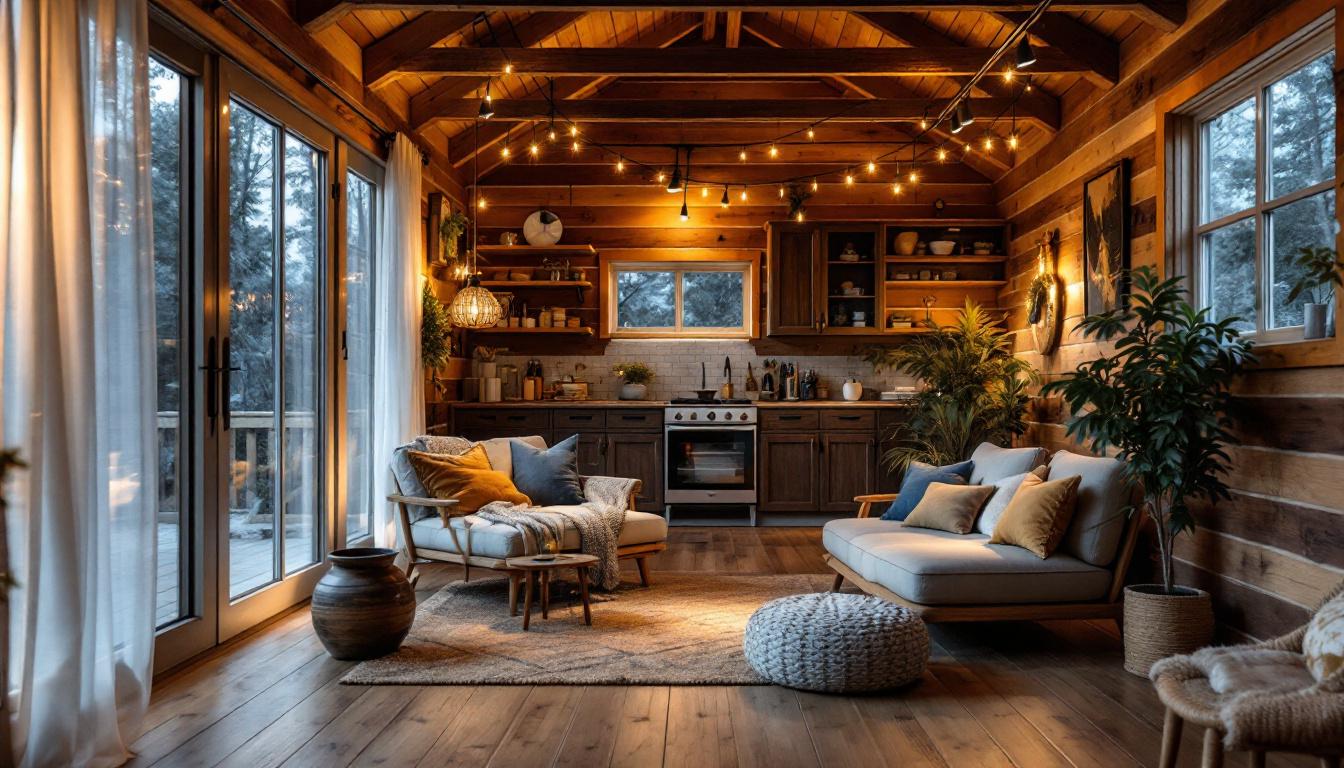
Lighting is a fundamental aspect of any construction or renovation project, and for lighting contractors, understanding the nuances of lamps and light bulbs is essential. The right choice of lighting can enhance aesthetics, improve functionality, and ensure energy efficiency. This article delves into the importance of lamps and light bulbs for lighting contractors, exploring various types, their applications, and the latest trends in the industry.
Incandescent bulbs have been a staple in the lighting industry for decades. They produce light by heating a filament until it glows, resulting in a warm, inviting light. Despite their popularity, they are less energy-efficient compared to modern alternatives. For lighting contractors, understanding the characteristics of incandescent bulbs is crucial, especially when working on projects that require a specific ambiance.
These bulbs are often favored in residential settings due to their warm light quality, making them ideal for living rooms and bedrooms. However, contractors should be aware of their shorter lifespan and higher energy consumption, which can impact the overall cost-effectiveness of a lighting installation. Additionally, the dimming capabilities of incandescent bulbs are often superior to those of other types, allowing for greater flexibility in creating mood lighting. This feature can be particularly advantageous in spaces designed for entertainment or relaxation, where adjustable lighting can enhance the overall experience.
LED (Light Emitting Diode) technology has revolutionized the lighting industry. Known for their energy efficiency and longevity, LED bulbs consume significantly less power than incandescent bulbs while providing the same amount of light. For lighting contractors, incorporating LED solutions into projects not only meets client demands for sustainability but also enhances the overall value of the installation.
Moreover, LED bulbs come in various color temperatures, allowing contractors to create different atmospheres in a space. From cool, bright light suitable for workspaces to warmer tones for relaxation areas, the versatility of LEDs makes them a preferred choice for many lighting designs. Additionally, advancements in LED technology have led to the development of smart LED bulbs that can be controlled via smartphone apps or voice commands, offering an extra layer of convenience and customization for homeowners. This integration of technology into lighting solutions can significantly appeal to tech-savvy clients looking for modern and efficient home systems.
Compact Fluorescent Lamps (CFLs) are another alternative to traditional incandescent bulbs. They use a fraction of the energy and have a longer lifespan, making them a cost-effective choice for both contractors and clients. However, CFLs contain a small amount of mercury, which requires careful disposal.
Lighting contractors should consider the specific needs of their projects when recommending CFLs. While they are suitable for general lighting, they may not provide the same warm light quality as incandescent bulbs or the instant brightness of LEDs. Understanding these nuances can help contractors deliver tailored lighting solutions. Furthermore, CFLs are often available in a variety of shapes and sizes, making them adaptable for different fixtures and applications. This flexibility can be particularly beneficial in commercial settings, where lighting requirements can vary greatly from one area to another, ensuring that each space is both functional and aesthetically pleasing.
Color temperature, measured in Kelvin (K), is a critical factor in lighting design. It defines the appearance of the light emitted by a bulb, ranging from warm yellow tones to cool blue hues. Lighting contractors must grasp how color temperature affects the mood and functionality of a space.
Warm light (below 3000K) creates a cozy atmosphere, making it ideal for residential settings. In contrast, cooler light (above 5000K) is often preferred in commercial environments, where clarity and focus are paramount. Understanding these preferences can guide contractors in selecting the appropriate lighting solutions for their clients.
Moreover, the choice of color temperature can also influence the perception of colors within a space. For instance, warm light can enhance the richness of wooden furniture and warm-toned fabrics, while cooler light can make colors appear more vibrant and true to life. This is particularly important in retail environments, where the accurate representation of products can significantly impact consumer behavior. Lighting contractors must consider these nuances to create visually appealing environments that resonate with the intended audience.
The color temperature of lighting can significantly influence mood and productivity. Studies have shown that cooler light can enhance alertness and concentration, making it suitable for offices and study areas. Conversely, warmer light can promote relaxation, making it ideal for homes and hospitality environments.
Lighting contractors can leverage this knowledge to create spaces that align with their clients’ needs. By strategically choosing color temperatures, they can enhance the functionality and aesthetic appeal of any project. Additionally, the integration of adjustable lighting systems allows users to modify the color temperature according to their activities throughout the day. For example, a workspace can benefit from cooler, brighter light during peak hours for maximum productivity, while transitioning to warmer tones in the evening to foster a more relaxed atmosphere. This adaptability not only enhances user experience but also promotes well-being by aligning lighting conditions with natural circadian rhythms.
As the world becomes increasingly focused on sustainability, energy efficiency in lighting has become a top priority for contractors. Energy-efficient lighting solutions not only reduce electricity costs but also contribute to a smaller carbon footprint. For lighting contractors, promoting energy-efficient options like LEDs and CFLs can be a significant selling point.
Moreover, many clients are now seeking green certifications for their buildings, making energy-efficient lighting solutions a necessity rather than an option. Understanding the various energy ratings and certifications can help contractors provide informed recommendations and enhance their credibility in the market.
Government regulations regarding energy efficiency are continually evolving. Many regions offer incentives for using energy-efficient lighting solutions, which can be advantageous for both contractors and clients. Staying informed about these regulations can help contractors guide their clients in making the best choices for their projects.
Additionally, understanding local building codes and energy efficiency standards can prevent costly mistakes during the installation process. By being proactive in this area, lighting contractors can ensure compliance and enhance the overall success of their projects.
Smart lighting technology is rapidly gaining traction in both residential and commercial markets. These systems allow users to control their lighting via smartphones, voice commands, or automated schedules, providing convenience and flexibility. For lighting contractors, incorporating smart lighting solutions into their offerings can set them apart in a competitive market.
Smart lighting can enhance energy efficiency by allowing users to adjust brightness levels and color temperatures based on their needs. This adaptability not only improves user experience but also contributes to energy savings, making it an attractive option for environmentally conscious clients.
As home automation systems become more prevalent, the integration of lighting solutions with these systems is essential. Lighting contractors must understand how to install and configure smart lighting systems to work seamlessly with other smart devices, such as thermostats and security systems.
By offering comprehensive smart lighting solutions, contractors can provide added value to their clients, ensuring that their lighting systems are not only functional but also integrated into a broader smart home ecosystem.
Effective communication with clients is crucial for lighting contractors. Understanding their needs, preferences, and the intended use of the space can guide the selection of appropriate lighting solutions. Engaging in thorough discussions about aesthetics, functionality, and energy efficiency can lead to successful project outcomes.
Additionally, contractors should be prepared to present various options and educate clients about the benefits and drawbacks of each type of lighting. This collaborative approach can foster trust and ensure that clients feel confident in their choices.
A well-designed lighting plan considers the interplay of different light sources and their effects on a space. Lighting contractors should aim for a balance between ambient, task, and accent lighting to create a harmonious environment. This involves selecting the right fixtures, bulbs, and placements to achieve the desired effect.
Moreover, considering the architectural features of a space can enhance the overall design. For instance, highlighting architectural details with accent lighting can add depth and character to a room. By paying attention to these details, contractors can elevate their lighting designs and exceed client expectations.
Human-centric lighting is a growing trend that focuses on the well-being of individuals by mimicking natural light patterns. This approach aims to enhance mood, productivity, and overall health by adjusting lighting throughout the day. Lighting contractors should familiarize themselves with this concept and consider how it can be integrated into their projects.
By implementing human-centric lighting solutions, contractors can create environments that support the natural circadian rhythms of occupants. This not only improves the quality of life for residents but also positions contractors as forward-thinking professionals in the industry.
Biophilic design emphasizes the connection between nature and the built environment. Incorporating natural elements into lighting design can create a calming atmosphere and enhance the overall aesthetic appeal of a space. Lighting contractors can explore ways to integrate natural light sources, such as skylights, and use fixtures that mimic natural forms.
This trend aligns with the increasing focus on sustainability and well-being in design. By embracing biophilic principles, contractors can create spaces that resonate with clients and promote a sense of tranquility and connection to nature.
As the lighting industry continues to evolve, staying informed about the latest technologies, trends, and best practices is essential for lighting contractors. Understanding the importance of lamps and light bulbs, along with their applications, can significantly impact project success and client satisfaction.
By embracing energy-efficient solutions, smart technology, and innovative design concepts, contractors can position themselves as leaders in the field. Ultimately, the ability to adapt to changing demands and preferences will ensure a successful and sustainable future in the lighting industry.
Ready to elevate your lighting projects with the finest selection of lamps and light bulbs? At LumenWholesale, we provide lighting contractors like you with the highest quality, spec-grade lighting products at prices that can’t be beaten. Say goodbye to local distributor markups and hello to our extensive, industry-standard collection that will brighten any space you’re working on. With free shipping on bulk orders, you can trust that you’re getting premium lighting at the best value — all with the convenience you deserve. Don’t compromise on quality or cost; choose LumenWholesale for your next project. Discover our unbeatable deals and enhance your lighting solutions today by visiting Wholesale Lighting at the Best Value.

Unlock the secrets of electrical plugs with our in-depth guide tailored for lighting contractors.

Discover the essential do’s and don’ts for lighting contractors working with HID lights.

Explore the key challenges lighting contractors face in the evolving industry landscape.

Explore the transformative role of modern lighting solutions in cabin design.